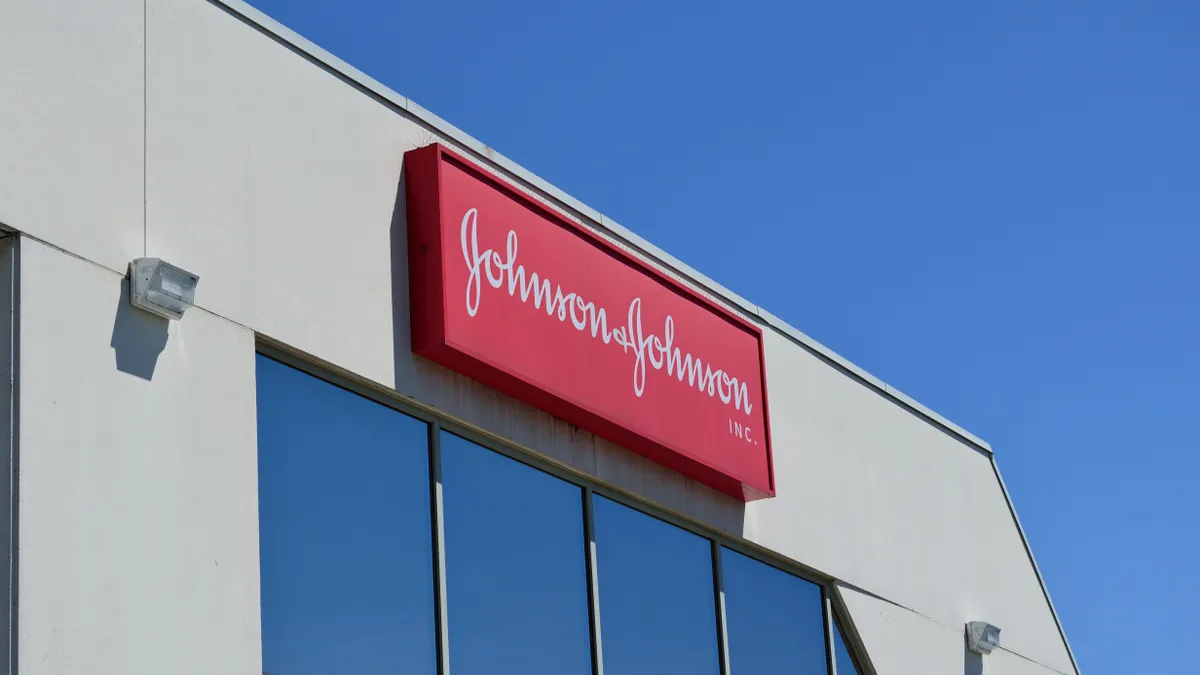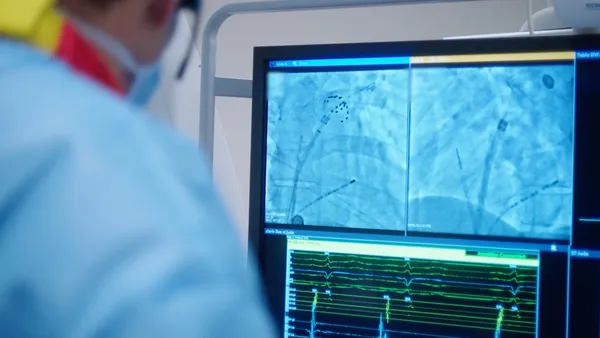Dive Brief:
-
Johnson & Johnson presented clinical data on the Monarch robotic surgery platform it acquired in its $3.4 billion takeover of Auris Health.
-
At a conference on Wednesday, J&J reported that investigators at five sites successfully used the robotic bronchoscopic system to localize targeted pulmonary lesions in 96% of cases.
- Adverse events were limited to two cases of pneumothorax, a collapsed lung, across 55 patients, leading the investigators to conclude the feasibility and safety profile is comparable to conventional transbronchial biopsy.
Dive Insight:
The trial, called Benefit, is assessing the use of Monarch to diagnose peripheral pulmonary lesions. At five study sites, surgeons used the technology to advance a scope to targeted lobes. Once at the site, radial endobronchial ultrasound (R-EBUS) was used to confirm the presence of a lesion. The surgeons used transbronchial needle aspiration to obtain tissue for diagnostic purposes.
Auris presented early clinical data from the trial in May, at which time the surgeons had successfully localized lung nodules in 22 of the first 24 patients enrolled in the study, resulting in a 92% hit rate.
The success rate has climbed since then. As of the most recent cutoff, the surgeons had successfully localized the targeted lesions in 52 out of 54 patients, resulting in a 96% hit rate. One patient was excluded from the analysis of the effectiveness of Monarch as R-EBUS was not available.
Previous studies of conventional transbronchial biopsy have found the established technique successfully localizes lesions in around 96% of cases. Based on those findings, the investigators concluded the robotic and conventional techniques are similarly effective. However, future readouts from the trial of J&J’s Monarch could differentiate the two approaches.
J&J has yet to share data on the diagnostic yield of samples taken by the surgeons. Diagnostic yield shows the likelihood a procedure will generate the information needed to diagnose a disease. The investigators plan to share that data "once the appropriate follow up period has elapsed."
There is room to improve on the diagnostic yield achieved using conventional transbronchial biopsy. In the aforementioned studies of the approach, the yield ranged from 59% to 69%. However, there are reasons to doubt whether Benefit will generate better results.
Diagnostic yield was highest, ranging from 75% to 84%, in the conventional transbronchial biopsy studies when the lesion completely surrounded the probe, giving a concentric view. The proportion of patients in whom concentric views were achieved in the earlier studies ranged from 51% to 63%. The rate of concentric views in the first 46 patients enrolled in J&J study was 50%.
J&J shared safety data in the latest update. Across the full, 55-subject study population, two people suffered from pneumothorax, also known as a collapsed lung. One of the patients required tube thoracostomy to treat their pneumothorax.










